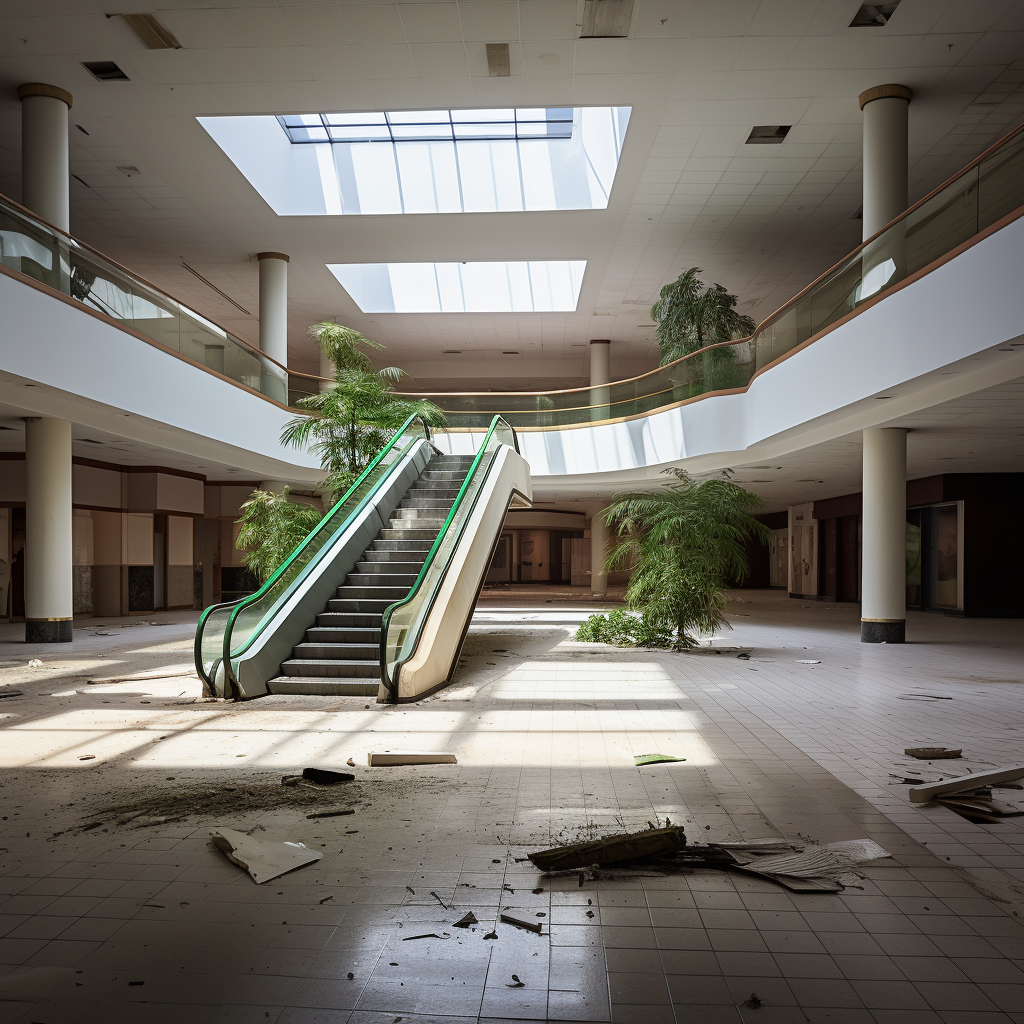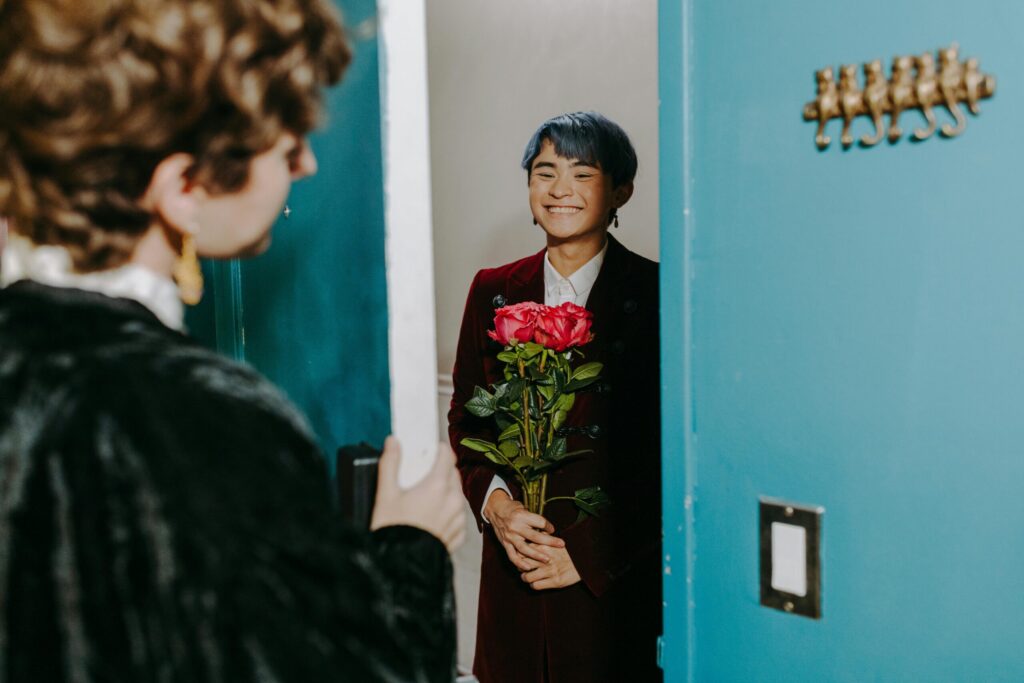I’m walking down the bustling streets of NYC, the city that never sleeps, but where queer third spaces seem to be taking a long nap. Once upon a time, these spots were our sanctuaries, our havens, away from the judgmental eyes of the world. But now? They’re fading, like old Polaroids in a forgotten album. In this melting pot of culture and chaos, we’re witnessing a pivotal moment for queer third spaces, not just as physical locations, but as symbols of resistance and hope.
The vanishing of queer third spaces
What exactly are these third spaces? They’re not your home (first space) or your work (second space). They’re those magical in-betweens – the parks, the libraries, the sidewalks outside of queer landmarks, where you walk in and feel the embrace of a community that knows you, that sees you. But here’s the rub: these sanctuaries are fading away, swallowed by the insatiable jaws of gentrification and commercialization. In NYC, where rent prices soar higher than the Empire State, maintaining these queer havens is becoming a Herculean task. It’s a silent erasure, a gradual recession of the rainbow flag: what once was a defiant banner becomes a small “All are welcome” sticker in a window.
In San Diego, my hometown, the concept of third spaces felt like a distant dream, something out of a queer fairy tale. I drove 30 miles of soulless highway just to get to school and back. But in NYC, the streets are bustling, the culture is tangible, pulsing with life. You’d never call the city soulless – maybe this is how we failed to see the loss of true third spaces in the first place.
This vanishing act isn’t just about losing a spot to grab a drink or catch a show. It’s about losing our history, our culture, our very identity. These spaces are where we celebrated our victories, mourned our losses, and plotted our revolutions. They’re where we found love, friendship, and sometimes, just a listening ear. They’re where we could be unapologetically ourselves in a world that often tells us to be anything but.
What happens when these third spaces disappear? What does it mean for our community, our identity, and our future?
Third Spaces and the Nonprofit Industrial Complex
When we look at the landscape of queer third spaces in New York City, the role of nonprofits and the industrial complex is both a blessing and a conundrum. On one hand, these organizations are vital in creating and sustaining spaces where our community can thrive. They bring resources, structure, and a level of legitimacy that can be hard to achieve independently. However…
The reliance on nonprofit organizations often comes with strings attached. Funding, as we know, isn’t just about money; it’s about power, influence, and control. When queer third spaces are under the wing of big nonprofits, they risk losing sight of what the people need. They might have to conform to the expectations of donors, which can sometimes mean sanitizing our spaces, our voices, and our unique identities to fit into a more ‘palatable’ mold.
The harsh truth is that money often comes with expectations and conditions. This ‘dirty money’ can subtly, or not so subtly, shift the mission and priorities of these spaces. It’s a delicate dance between staying true to the core values of the queer community and ensuring the lights stay on.
Moreover, the operational hurdles are significant. From securing affordable spaces in a city with sky-high rents to navigating the complexities of city regulations and permits, the logistical challenges are daunting. How much of a $1M fund should go to overhead and administrative costs vs directly into the pockets of the people themselves?
Queer third spaces are so rare that turning to nonprofits is often a compromise that needs to be made. Beggars can’t be choosers, as they say. Especially when the next best thing is usually collaborating with for-profit corporations who seek to commercialize and commodify community.
Can a digital space be a third space?
As the physical fabric of queer third spaces in New York City started to fray, a new thread began weaving its way into the tapestry of our community: digital platforms. In an era where the tangible is losing ground, the virtual world has stepped up, not just filling the void but expanding the realm of possibilities for connection, support, and activism.
Consider the COVID-spurred rise of virtual meetups, online workshops, and digital art spaces. These aren’t just placeholders for physical interaction; they’re unique platforms where creativity, support, and activism intermingle. In NYC’s digital ether, you’ll find forums dedicated to queer literature, online drag shows that push the boundaries of art and gender, and Zoom support groups that offer a lifeline during times of isolation.
Furthermore, these digital platforms have become a powerhouse for mutual aid. They facilitate the exchange of resources, advice, and support, embodying the ethos of solidarity over charity. In NYC, where the pandemic and socio-economic challenges have hit hard, these online spaces have been instrumental in organizing fundraisers, sharing crucial information, and creating networks of care and support.
Since many digital platforms were distributed under late stage capitalism and a culture of endless surveillance, it is a testament to our community’s adaptability and resilience that we have been able to use them for good. It’s a reminder that while our physical spaces are precious, our spirit of community and solidarity cannot be confined.
The future of queer third spaces
As we peer into the horizon of queer third spaces in New York City, the future beckons with a blend of challenges and boundless possibilities. The key to sustainability lies in rethinking and reshaping the traditional models, steering away from sole reliance on the nonprofit sector and its accompanying constraints. The future we envision is diverse, inclusive, and resilient, built on the foundations of cooperative ownership, community funding, and innovative partnerships.
Imagine queer spaces run as cooperatives, where ownership and decision-making are democratized, and the community itself steers the ship. These cooperatives could take many forms – from cafes and bookstores to event spaces and galleries – each a microcosm of collective effort and shared values. This model not only ensures that the spaces remain true to the community’s needs and aspirations but also fosters a sense of belonging and ownership among those it serves.
Community funding is another cornerstone of this envisioned future. Crowdfunding campaigns, community trusts, and membership models can provide the financial backbone for these spaces, liberating them from the whims and conditions of external funding sources. By pooling resources, the community can create a self-sustaining ecosystem that thrives on the principles of mutual aid and solidarity.
Moreover, the future of queer third spaces in NYC lies in forging alternative partnerships that align with our values and goals. Collaborations with like-minded businesses, artists, and social organizations can create a synergistic network, amplifying the impact and reach of these spaces. These partnerships can bring in a diverse range of resources, skills, and perspectives, further enriching the community experience.
The resilience and adaptability of the queer community in NYC are the bedrock upon which the future of third spaces rests. We’ve witnessed this resilience in the face of adversity, the adaptability in the shift from physical to digital, and the unyielding spirit of solidarity that binds us. The road ahead may be fraught with challenges, but it’s also paved with hope and potential. As we reimagine and rebuild these essential spaces, let’s carry forward the lessons learned, the bonds formed, and the spirit of community that defines us. The future of queer third spaces in New York City is not just a dream to be realized; it’s a testament to our collective strength and a beacon of hope for generations to come.
Taylor’s favorite third spaces in NYC
- Bluestockings Cooperative: Originally a bookstore and café, Bluestockings operates as a worker-owned cooperative. It’s a hub for activist meetings, radical book readings, and community events, focusing on feminist and queer issues.
- The People’s Forum: A movement incubator for working-class and marginalized communities, The People’s Forum provides space for educational and cultural events, focusing on social justice and radical change.
- Mayday Space: Located in Bushwick, this social justice-focused venue hosts workshops, art shows, community gatherings, and more, fostering local activism and serving as a radical community hub.
- Starr Bar: In Bushwick, this bar is associated with Mayday Space and serves as a social hub for activists and artists, hosting events that combine social justice activism with a convivial atmosphere.
- Queer Soup Night: A grassroots fundraising collective that hosts soup-centric community events. It’s a delicious way to gather, eat, and raise money for various causes, reflecting a blend of community support and activism.
- The Base: An anarchist political center in Brooklyn, offering a space for workshops, classes, and meetings, focusing on anti-capitalist and anarchist principles.
- Principles cafe: An example of a community-driven cafe that functions as a sober space complete with a “pay what you want” system.
- Seward Park Library: Any library will do. This one is simply the one I terrorize most frequently. Thanks to our mayor, libraries and their essential services are being defunded on an annual basis. It’s a war on poor people, queer people, and anybody who benefits from an unmonetized third space.







